A Big Spring Update
We’ve rolled out a big update to Seed with a couple of key improvements that we’d like to announce.
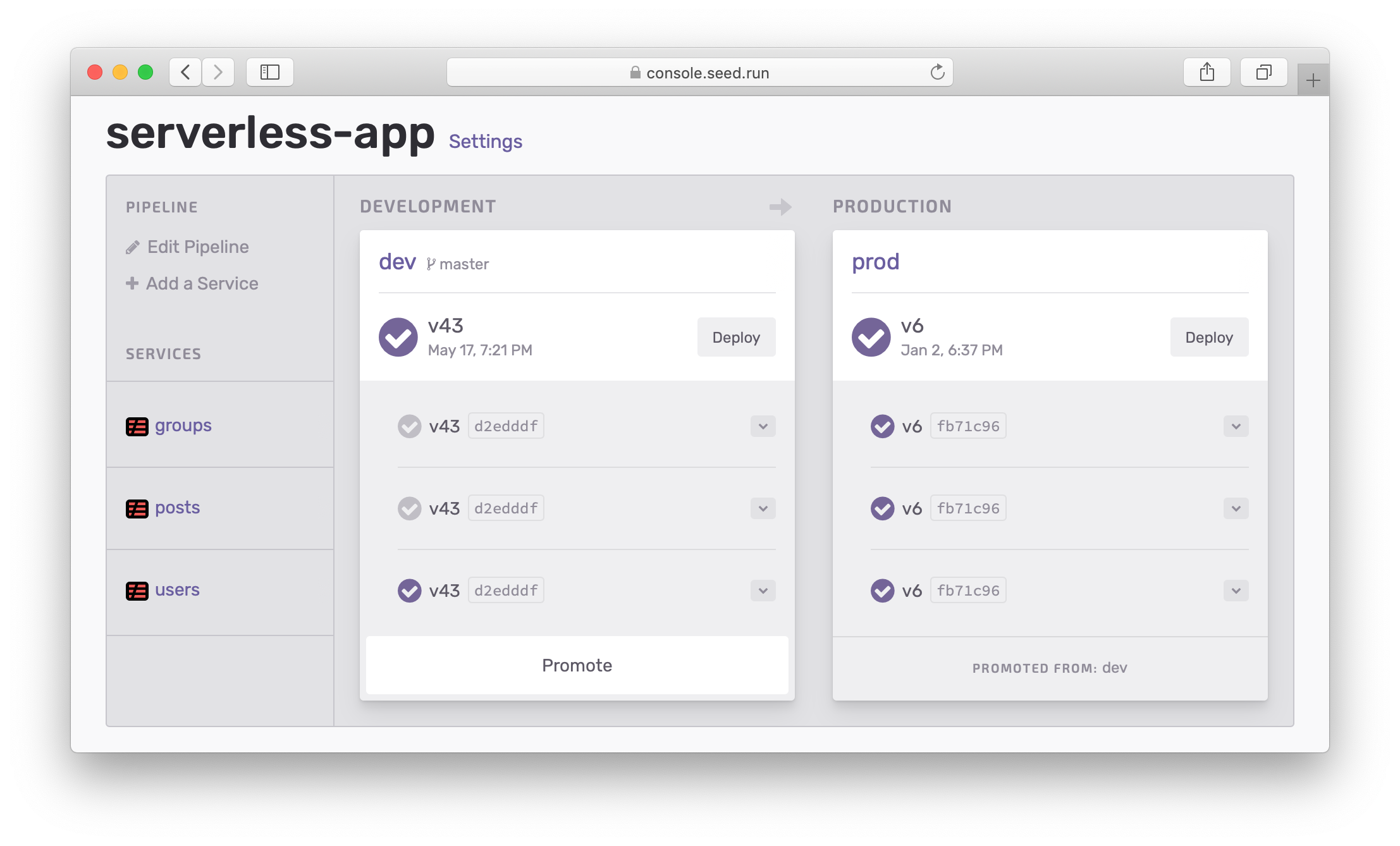
A New Pipeline UI
We have an all new pipeline interface that makes it a lot easier to edit and interact with the various aspects of your serverless app.
-
The overall status of a build
Previously, the pipeline table only showed you the status of each of the services in your app. This meant that you would have to click on a specific build to see its complete status. Now, we show you the status of a build clearly at the top of the stage.
-
Viewing build logs for a service
Also, clicking on the build status for a service now takes you to the build logs for that specific service.
-
Manually trigger deployments
You can trigger a deployment to a stage directly from the pipeline without having to click through to it.
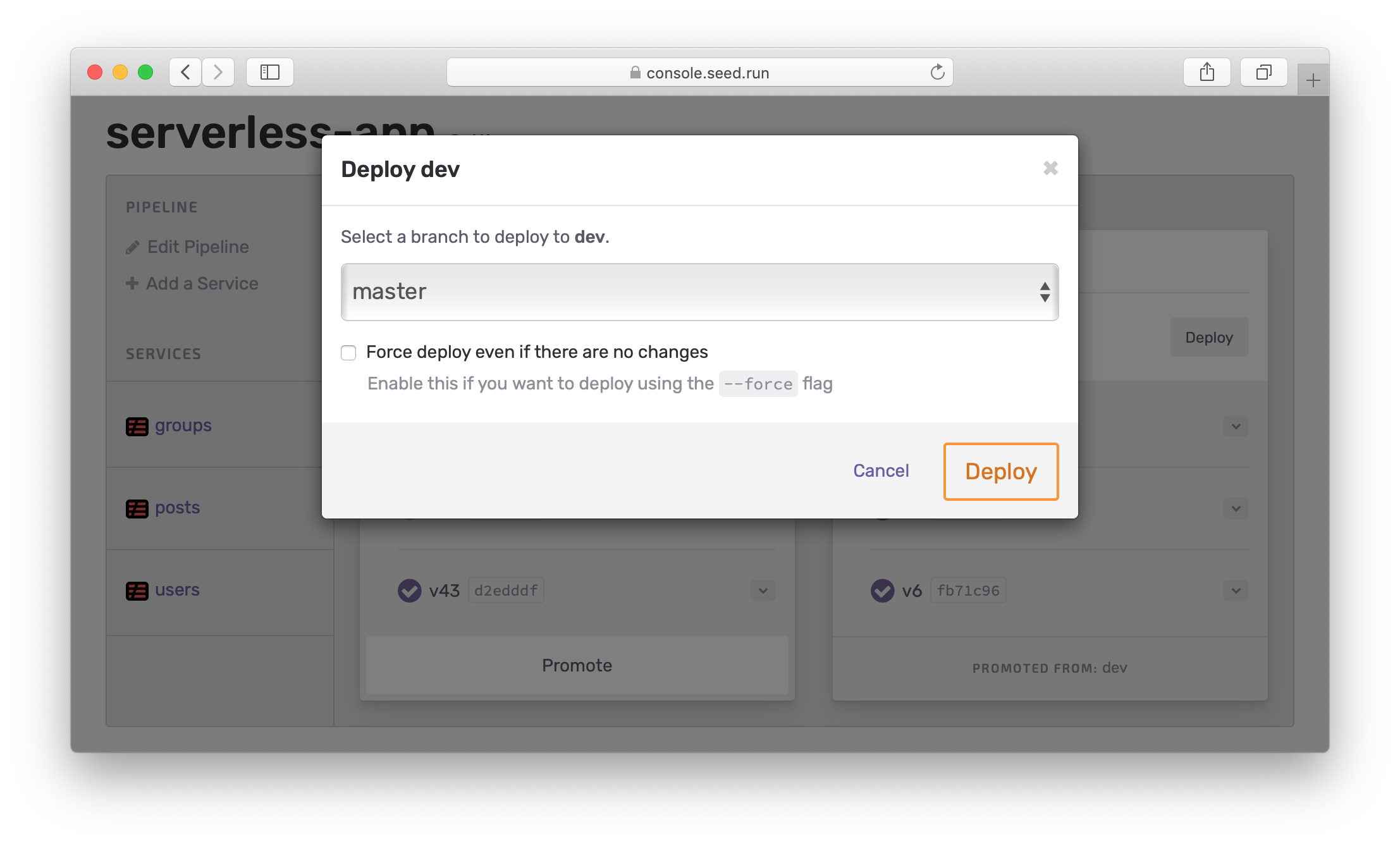
Along those same lines, you can trigger a deployment to a specific service directly from the pipeline as well.
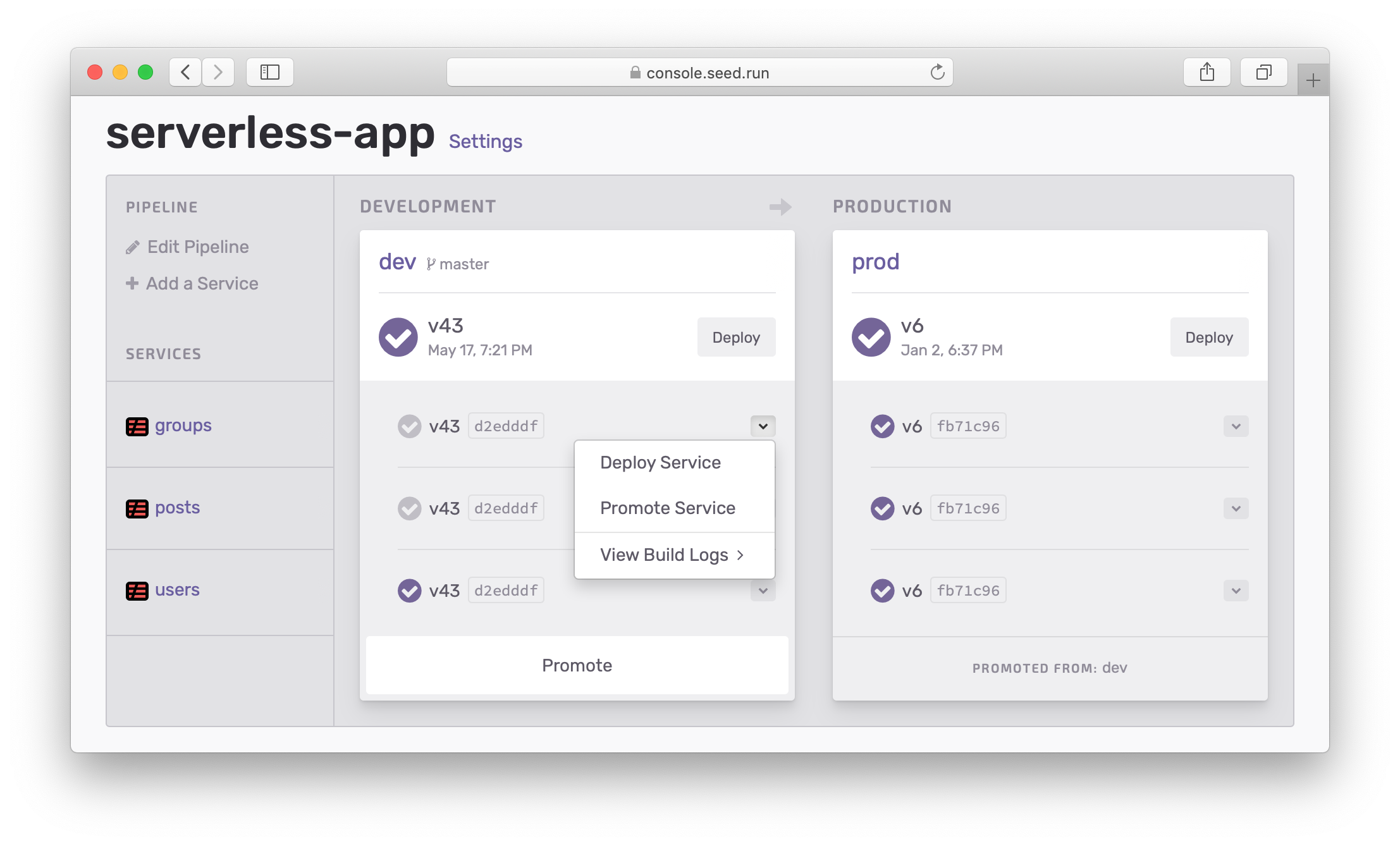
-
Promote a service
While you could promote a stage from the old UI; you still needed to click through to an individual service to promote it. Now you can promote a service by clicking on the dropdown next to it.
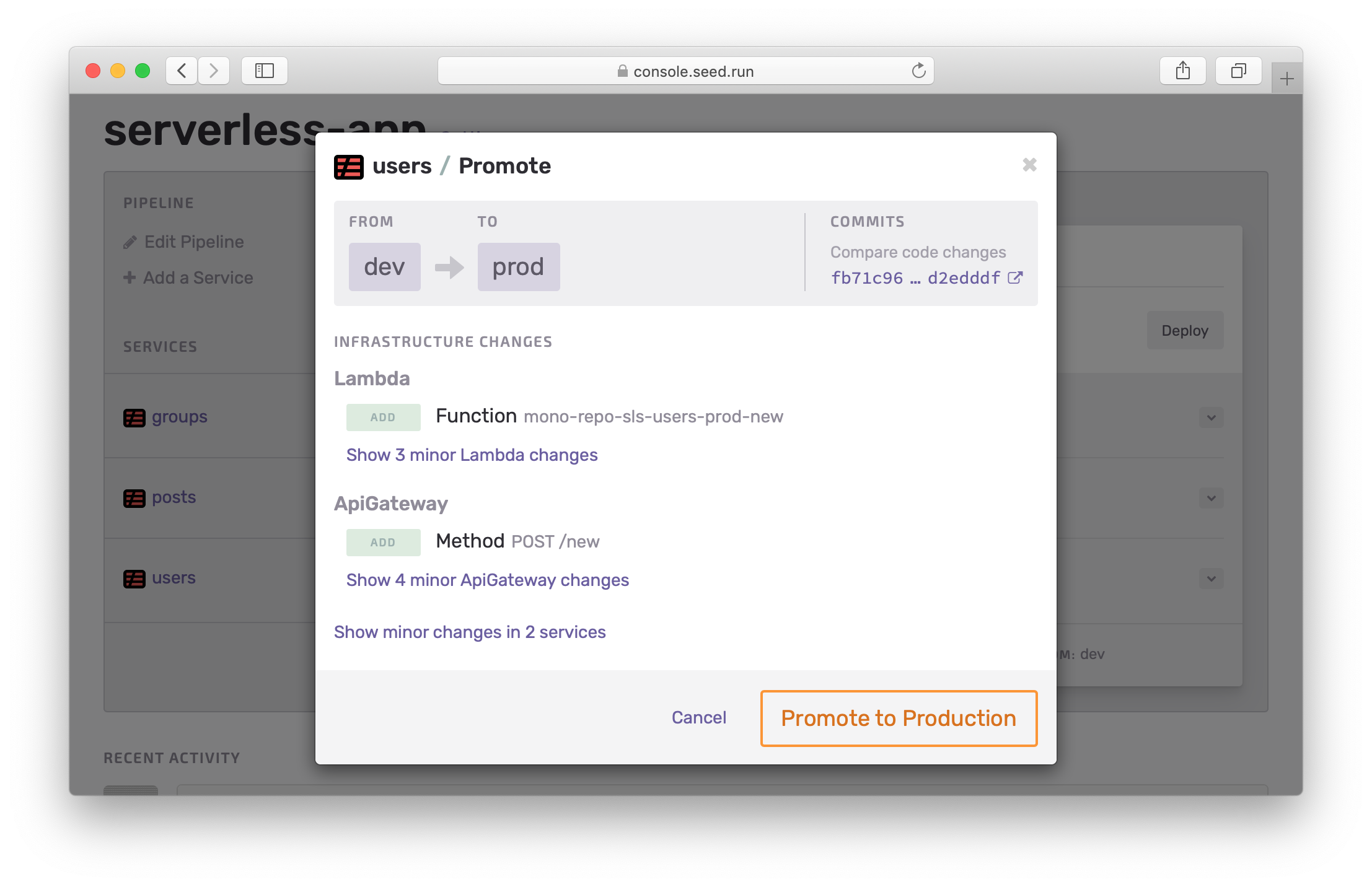
-
Add a service
You can also add a service directly from the pipeline.
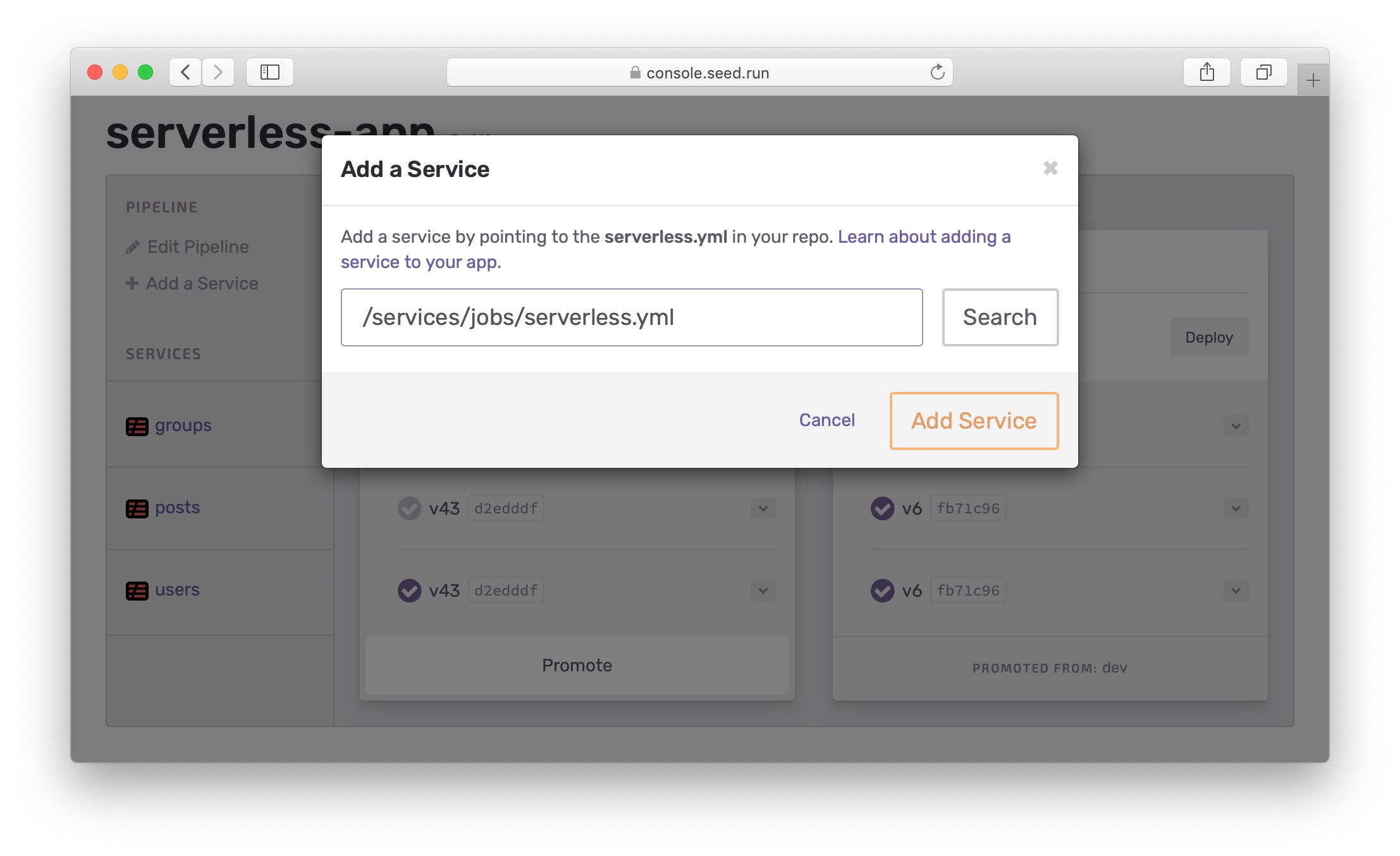
-
Edit the pipeline
Finally, you can edit the pipeline in-place without having to go to the settings page to do so. The pipeline editor allows you to add new dev/staging stages and re-order them as well.
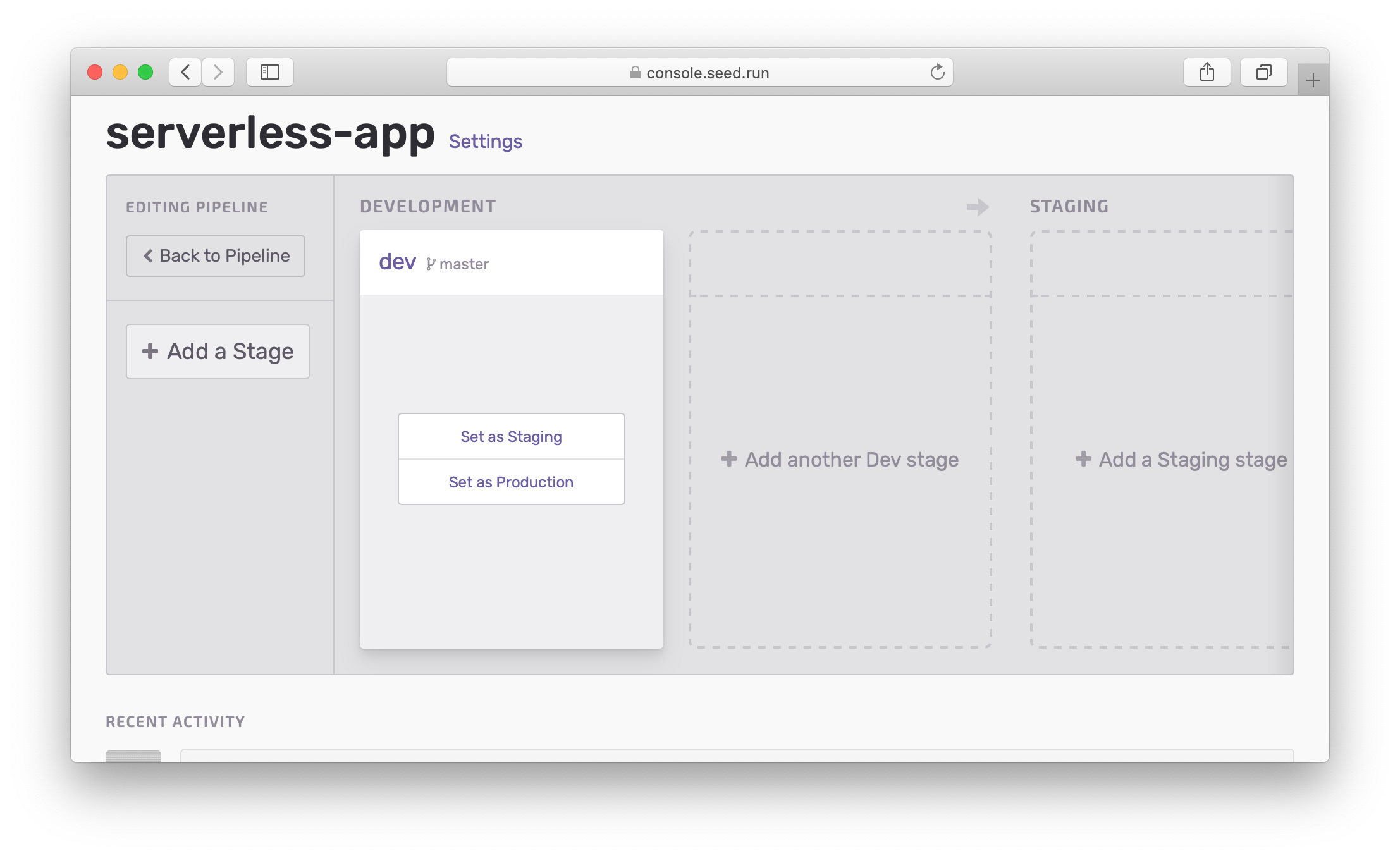
The new UI improvements gives you a great bird’s-eye view of your deployment pipeline and one click access to all the common actions.
Only Deploy Updated Services
Another big update that we had been working on, is to be able to skip deploying services that haven’t changed. Previously, Seed would force deploy all your services on every commit. This meant that for monorepo serverless apps with multiple deploy phases, builds could be really slow.
Now Seed will skip deployments for services that haven’t been updated. We rely on the check that Serverless Framework does for this. It diffs the code package and CloudFormation template to see if the service needs to be deployed. Note that, the entire build process proceeds as if the build has been successful. This means that all the relevant hooks in the build spec are executed.
Builds that have been skipped are marked as such and you can see their status in the build logs.
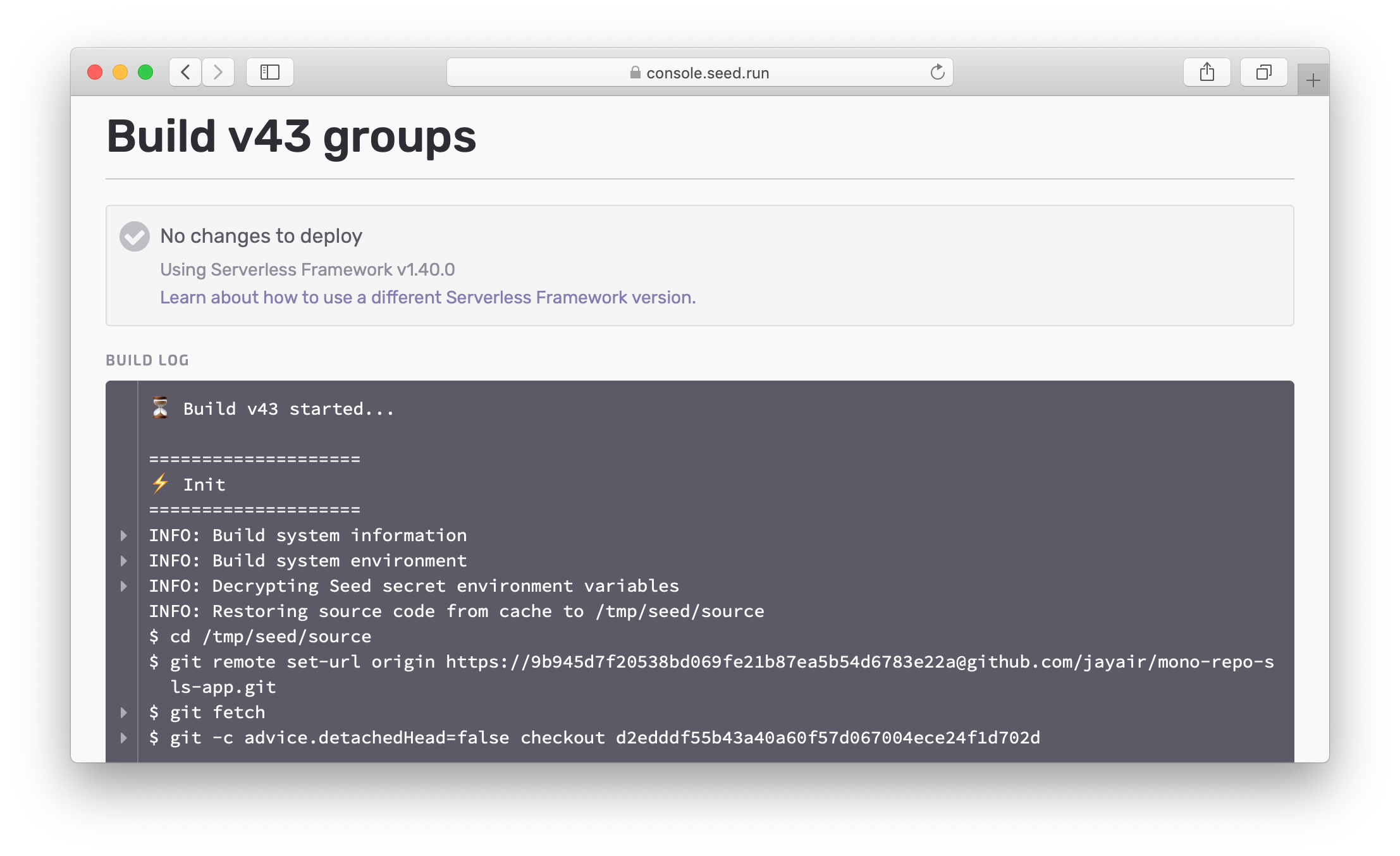
There might be cases where you want to force a deployment. To do this simply select the force option while triggering a deployment.
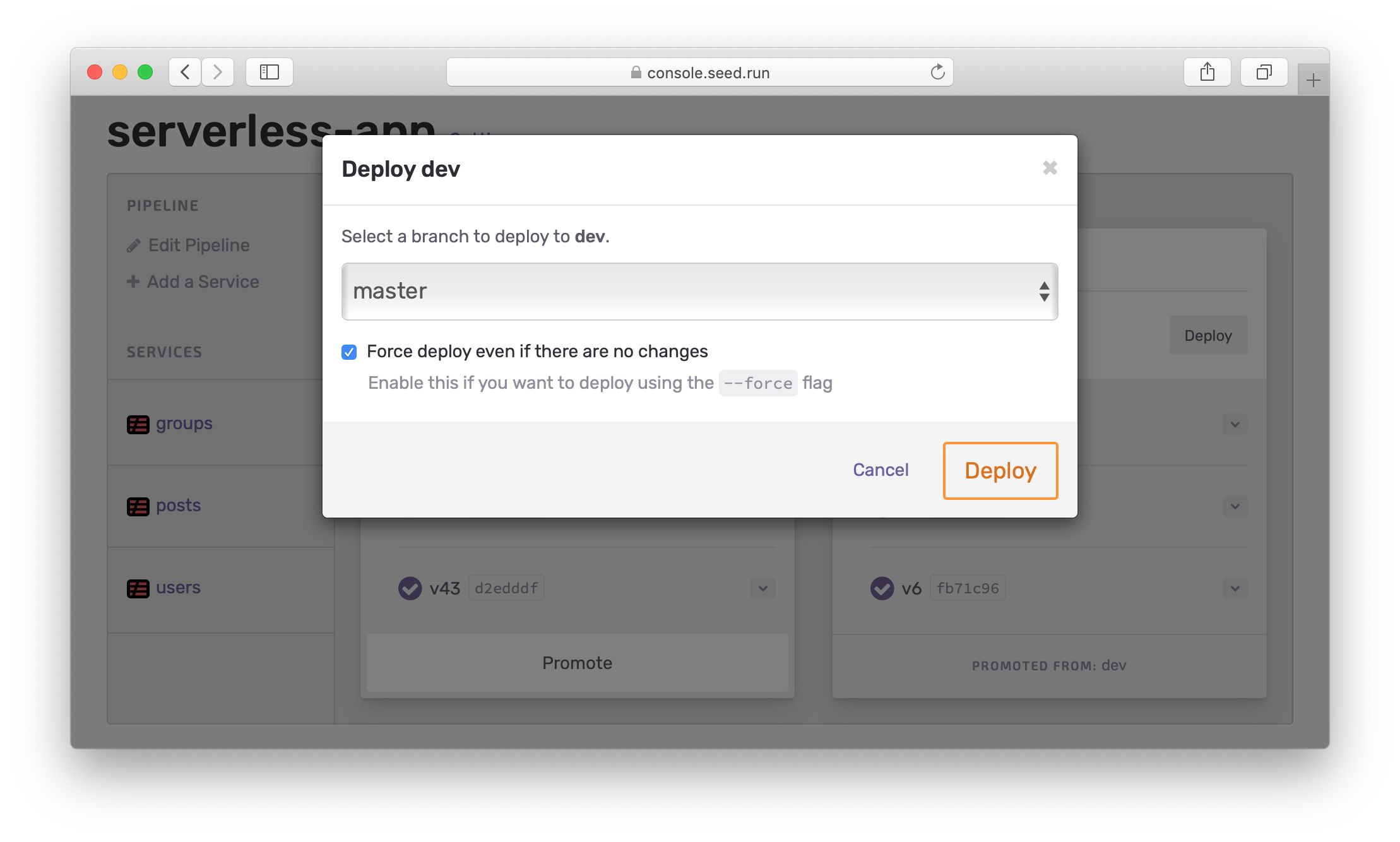
You also might have noticed that your builds have gotten faster over the past few weeks. We are doing some great work behind the scenes to improve this. While this will be an ongoing process, we updated the console to show you how long a build took to deploy.
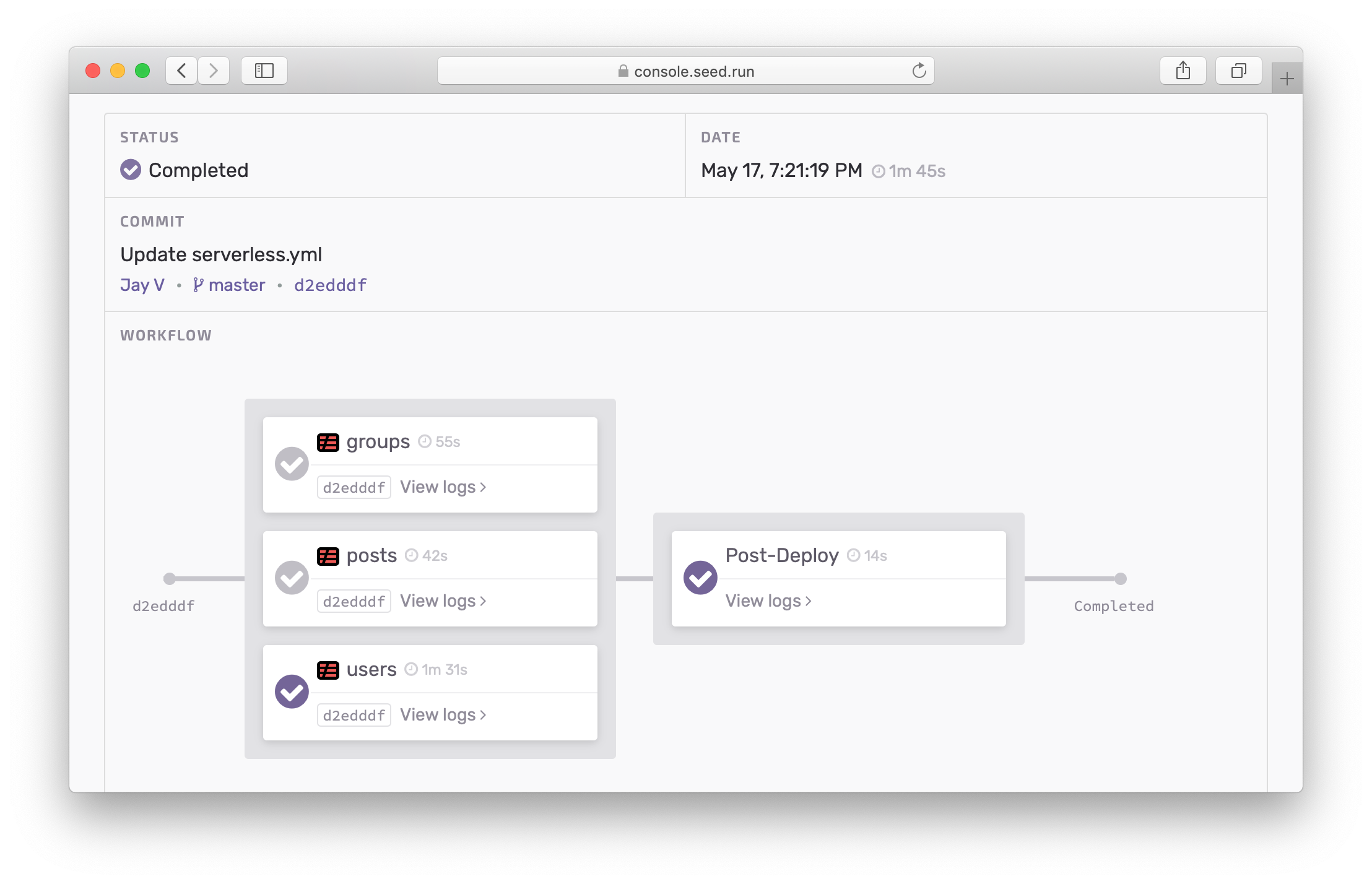
You’ll notice that we also show you how long each service took to complete.
Better Git Integration
We also made some changes over the last couple of weeks to add better Git related context to the builds. We now show you the avatar of the committer and the commit message.
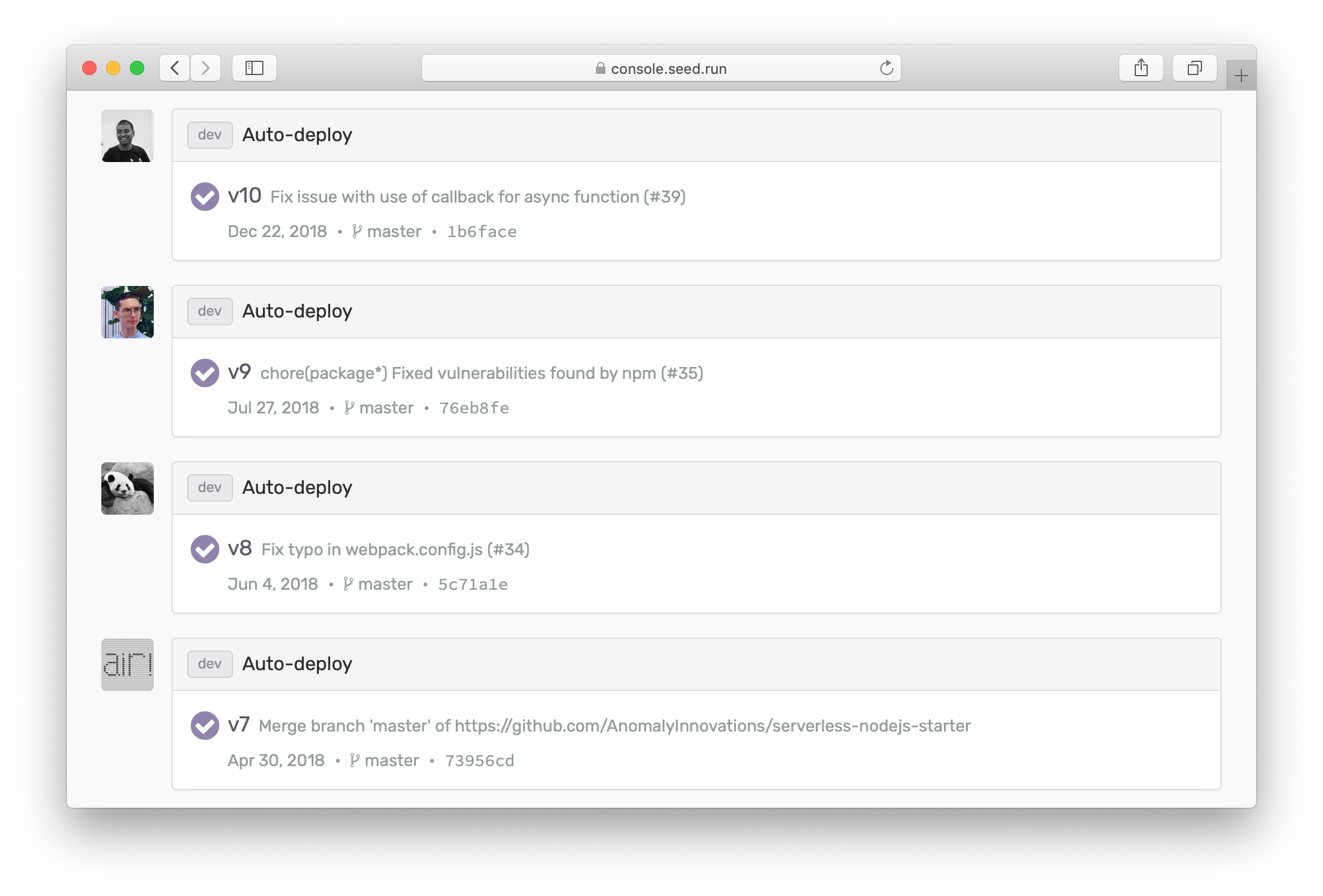
And the full commit info as a part of the build report.
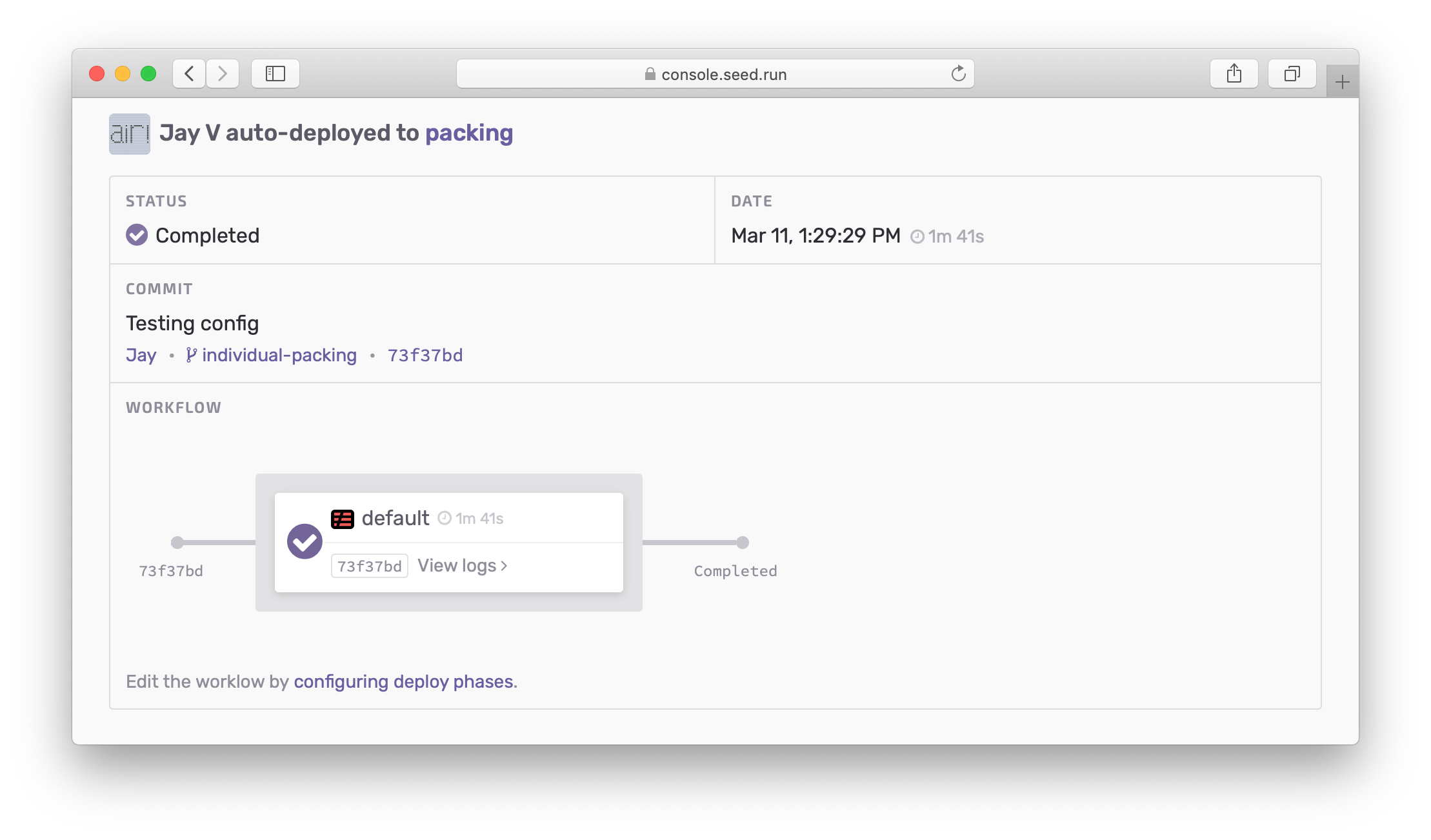
Finally, we allow you to review the code changes while promoting a build.

This sends you to GitHub (or your Git provider) to compare the commits.
All the great feedback we’ve been receiving has really helped shape the product roadmap for Seed. We have a ton of other updates in store. We think this will continue to make Seed the easiest way to manage deployments for your Serverless apps. So give the new updates a try and continue to send us your feedback!
Do your Serverless deployments take too long? Incremental deploys in Seed can speed it up 100x!
Learn More